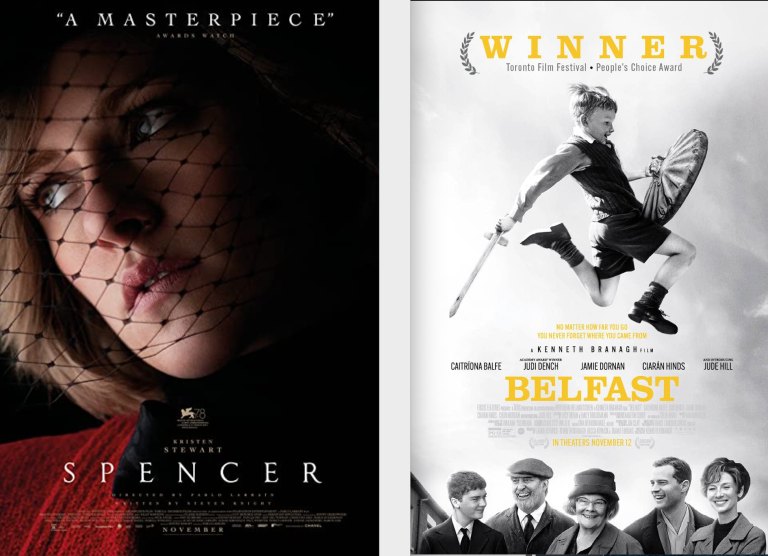
I had a chance to interview a make-up artist and hair designer, Wakana Yoshihara, who had a remarkable year in 2021, she tackled two of the Oscar contenders, “Spencer” and “Belfast,” please read about how she took on the challenge of creating a princess Diana’s look and working on the Black and White film.
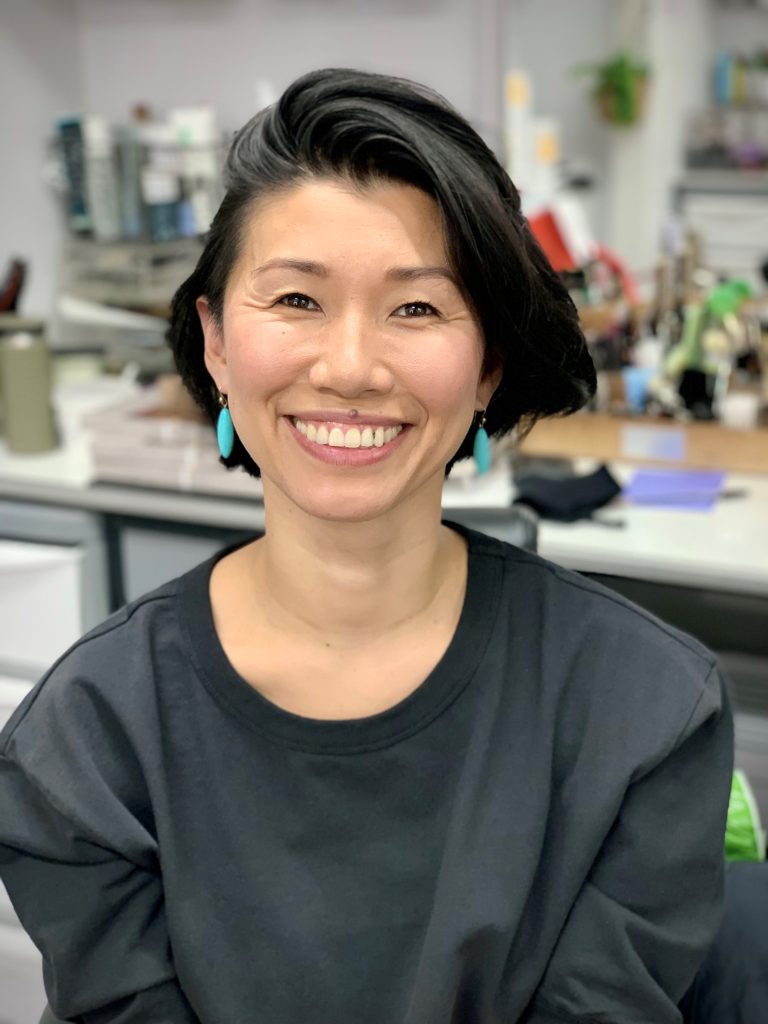
An Exclusive Interview with a Make-Up Artist and Hair Designer, Wakana Yoshihara
Q: I heard that you’re actually used to working in hair salons before you made a transition to the movie business. So how did you make that transition into the film business?
WY: It’s quite funny. When I was a hairdresser, I was living with a costume designer. She said “Would you like to come help with my shoot? “ I think it was 2005. She took me to the wardrobe department – even though I was doing only hair and makeup. But she said “Can you just sew these numbers?” So that was the first time I went to the Shepperton studio.
That was actually Ken’s [Branagh] movie..
Then maybe fifteen years later, (On the set of “Cinderella“) I told Ken that I was actually on the set of “The Magic Flute” and that was the first film job that I came in to help. So from there I saw that this kind of business existed and I looked into it. When I was doing hairdressing, I was asked to do music videos and some commercials. So that one shoot got bigger, so it was like a monster – I was asked to do a different kind of shoot. Eventually somebody asked me if I wanted come to do a film in Argentina for three months for a Merchant-Ivory movie.
I was still studying at that time. I went to the university and I did a BA in Performing Arts for makeup. I was making a tradition of becoming a hair and makeup artist in the film business. I was asked to come to work in film production because I was already a qualified hairdresser. That was quite profitable for this film production. So that was my first film which was 2006, and from there, people just recommended me to one film after the other.
Q: What is the first movie that you worked on?
WY: It’s called “The City of Your Final Destination”, that was Merchant-Ivory Productions, and we had Anthony Hopkins and Laura Linney. Also we had Sanada Hiroyuki, that’s another Japanese actor. That’s where I met him for the first time. So we had great actors on that job. The film didn’t do that well, but it was such a lovely film and I met lovely people from there. Then people recommended me to the second film, and I just went on.
Q: I know you got quite active year because you worked on “Spencer” and ‘Belfast” and those movies are really highly regarded. Let’s talk about “Spencer” first. Obviously, people are very familiar with Diana’s makeup and hair style through the TV camera and news articles, so you had to make it authentic to convince an audience. Where did you actually start from that and what kind of material did you look into?
WY: Princess Diana is the most photographed person in history, so there are so many images available. I looked into so many different images of Princess Diana in a different era. I spoke to Pablo [Larraín], the director, and asked where we were going with Kristen Stewart. You have to really think about it; you can’t just make the person turn into the character. You have to see what kind of combination works for the person.
So the approach was to – Pablo used to say quite a lot that we are not making Kristen Stewart into Princess Diana, we are introducing Diana into Kristen Stewart. We looked into what was Kristen more than we tried to force Kristen into Princess Diana. We thought that it’s iconic and memorable enough that the people recognize their Princess Diana in Kristen. So much research and a number of testing.
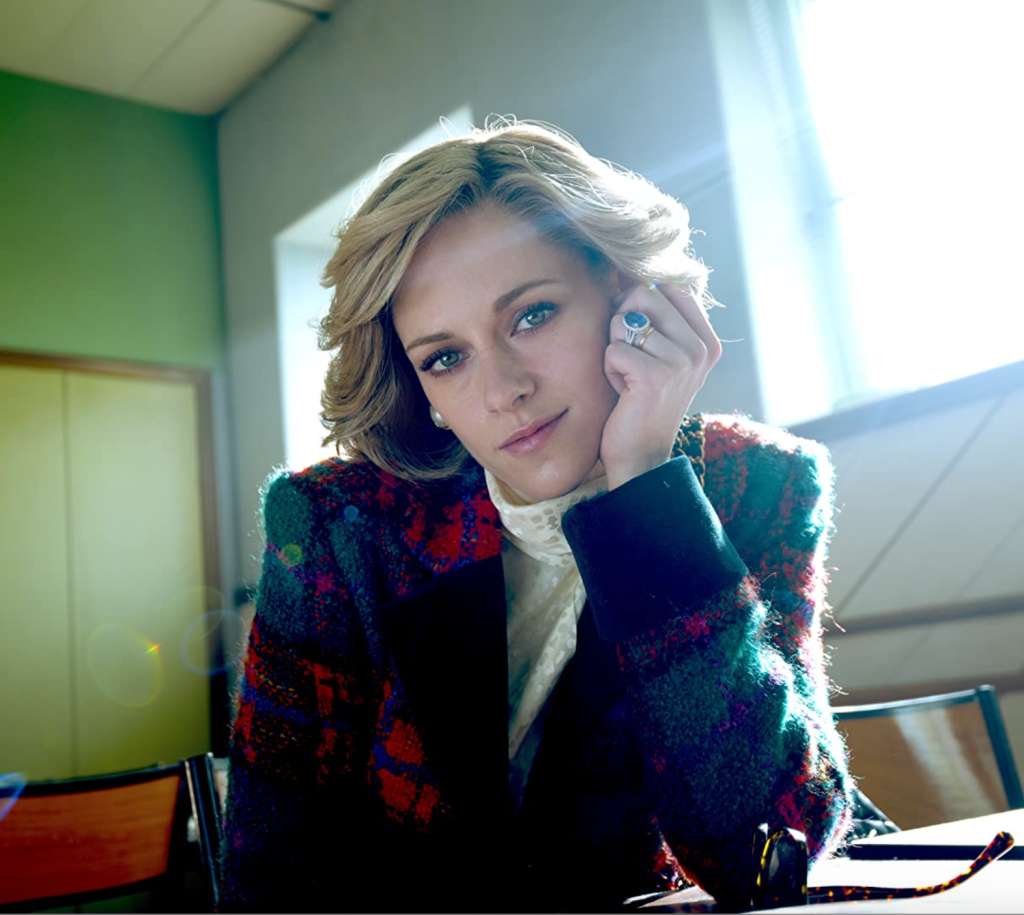
Q: Like what specific era you’re looking into and what research you did you do for Diana’s look?
WY: Yes, if you would like to be historically correct, we are shooting around 1991 or 1992. So at that time, Diana’s hair was quite short. And then I presented to Pablo that this is the picture of Diana from ’91 and he [said] this is not what we are looking for” and showed me the picture of the one he was using for this film and he sent me three photographs and all of them are from 1986 and 1987. That was a time that Diana had just had Prince Harry. So we said okay, let’s work from that and so we had our photograph of Princess Diana.
Then I googled to find out the locations that Pablo liked in these particular pictures, and then I researched different angles because sometimes if it’s like an event, there are so many photographers at the event taking pictures from different angles. So I had maybe like twenty images from different photographers with different films [stock] and different color, and different lighting and exposure. So I just reconstructed the images that we were working from.
We opted to using wigs because Kristen’s hair texture was completely different from the hair Diana had, and then also the amount of hair. I didn’t think we could make it work using Kristen’s own hair, so we started making her the wigs.
Then we could only see each other a few times just before we went to shoot because of the pandemic. But every fitting, there was the opportunity to see how to make it better. So at fittings we’d say “okay, let’s make a color change” or maybe “let’s put more hair into it”.
So I think we managed to make it the way you see on screen. On the day of the shoot we’d be changing the wig until the night before we shot. But I think we are very happy with the outcome.
Q: I remember seeing that Diana looks different every time we see her on TV or news articles, which means that it depends on the clothes that you also have to match with that hairstyle. How do you collaborate with the costume designer when it comes to that?
WY: I think it was really difficult because of Jacqueline Durran, costume designer, because we were shooting in Germany. There was a travel ban and Jacqueline had to stay in the UK to establish the remaining cast. I could travel to Germany but Jacqueline couldn’t, so we had to work via remote.
Lots of things happened quite quickly and the story takes only three days. But there were so many different costumes that she wore mornings, afternoons and evenings. Jacqueline gave me the story line of the costumes and then there were maybe fifty costumes for a montage. And the montage really happened very spontaneously and very quickly, so we couldn’t really prep so much to do. So I think most things we had to be quite creative and spontaneous.
And I made it quite simple that her hairstyle would change probably in the beginning when she comes into Sandringham and when she leaves Sandringham. So I made it like I wanted her to come in front of the camera like Diana is being “presented”, but when she leaves Sandringham I wanted her to be more vulnerable, as herself.
So that is the difference between the hair stylings, and with the different costumes, and also the makeup changed. There were changes with every occasion but the changing was quite subtle. But we had to make it that way because of the speed that Pablo was shooting. So sometimes we just kind of threw something in and made it work.
I think some of her iconic costumes, like the wedding dress, we had to get right because it was something that people remember. Some of the specific images with the costumes, I tried to make it as close as the historic photographs.
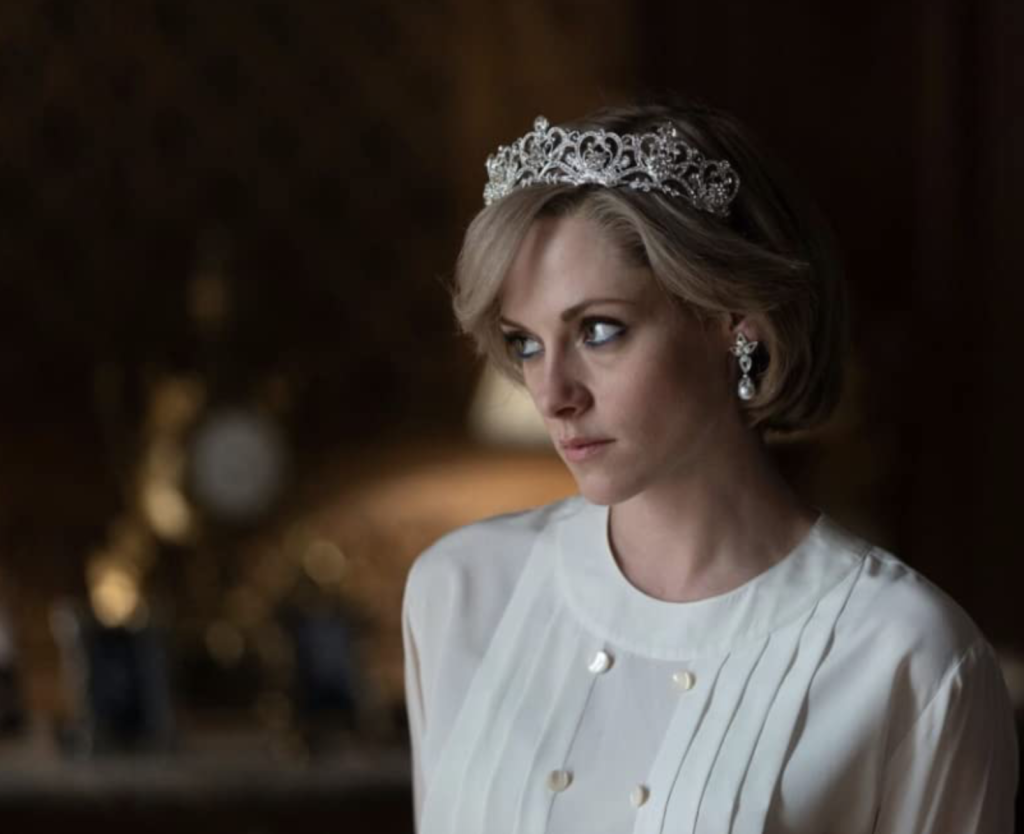
Q: I had a chance to talk with Pablo back in November. He mentioned that the story was like a fairy tale, it had a fable aspect to it, as opposed to like a documentary style that looks as they had in the past. So does his insight or suggestion make you take a different approach that you initially had in your mind?
WY: Yes, I think a few of the things that I had to make on the spot. And then as Pablo says sometimes, he wanted to keep this sequence as a surprise to get critics’ reactions. So he was not telling anyone that she was going to wear this dress and do this action. Kristen didn’t know herself: “what am I doing?” And also, like in that moment when we decide and there was no time to – Pablo [would go] “By the way, I’d like to change the hairstyle” and I knew that was not possible. So I’d just change things on the spot and make it look different from the different scenes, and had to make them very quickly. I think we were only shooting for eight weeks, so like forty days. With a sequence like that, we had quite a lot to go through. So you can imagine that we are squeezing a lot of things into one day.
Q: That’s a real challenge.
WY: I think sometimes, you know, we have to be quite flexible, and also understanding the director and how everybody’s shooting. I try not to get in the way, but I still want to do my job, so I try to find a good timing, an opportunity to do something.
Q: We talk about how good Diana looks. Talk about other cast members – creating Queen, Charles, and Harry’s characters? How do you approach those people? Do you also look into the material in the past, or how is it different from Diana?
WY: I had pictures of Charles. One of the things I really wanted to be specific with was to make the bald patches on the back of his head, which you don’t really see but they are much in the films. But Jack [Farthing] has got really long hair to the shoulder, so Charles’ look was done with wigs and a bald cap combined.
Jack doesn’t look like Charles, so we had to discuss looking into solutions and how we could make him look to that. Jack had the idea of “My ear is very flat. Is there any way we can push the ear forward? because Charles has quite a significant shape of the ears. So we managed to put a prosthetic behind his ears and push his ears forward. It’s very subtle, and I don’t think you would see as much as I did. That’s a big change in hair and makeup. If you see a picture of [how] Jack looks and [then] as Charles in the film, I think there’s a big difference you would see.
Then the Queen, it was very straightforward. We just looked into the pictures of 1991, ’92, and then we just tried to make the hair thicker so we altered the wig. Then tried to make her features more defined, like the Queen’s.
So I think it was a quite easy process to have the material to work with, and that you would have material [for the actor] so we can pound this person closer into this character, to keep the nuance and also their character in their appearance. So that’s how I worked.
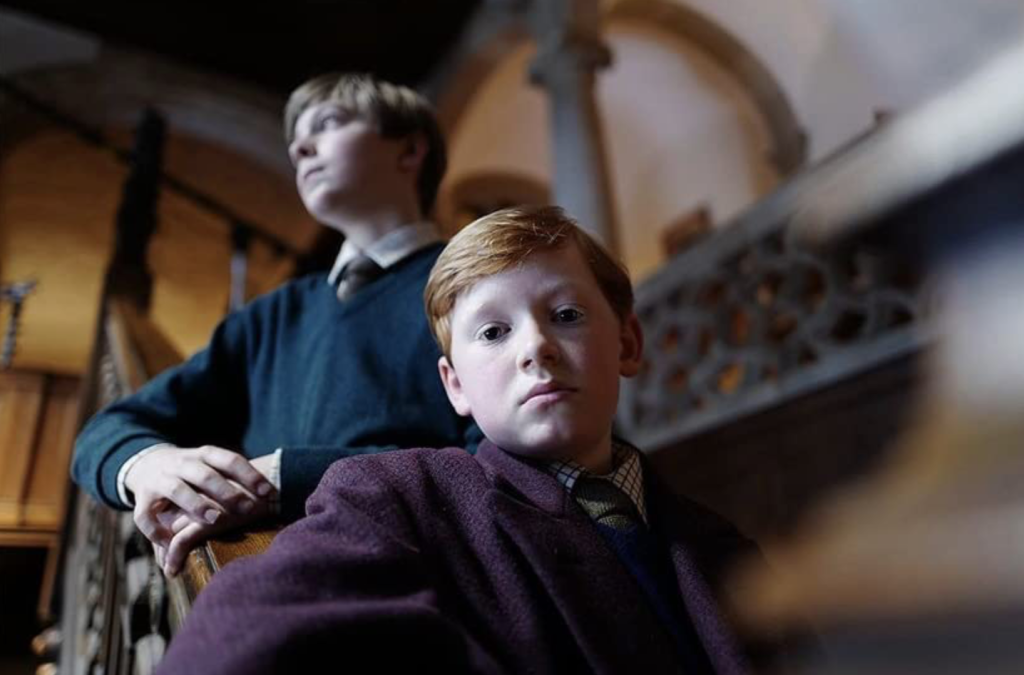
Q: This was shooting during the Covid lockdown. Was there a challenge of shooting during that, because you’re concerned about getting too close to people. But when you’re doing makeup, obviously you have to be very close. So was there any challenge working during Covid?
WY: The challenge was because there were lots of people who couldn’t fly back and forth, and then you only get the one chance to do all fittings. So we had to be very, very organized in what we did, and good communications. We don’t get to have very much time because everybody had to quarantine.
This wasn’t like a really big feature film. They had a healthy budget, but it’s not like you could put somebody into a hotel for weeks and weeks. So we only got one day to fit, and then next day we had to shoot. So not much time to change anything that goes wrong. We had to be very organized and very specific in what we were doing. So that’s the challenging part.
I think we are all used to keeping distance, and following Covid protocols, and so on a day-to-day basis it wasn’t difficult. We just had to follow the rules. But getting everybody ready was tough.
Q: Right. This character – the loyal family household, like a maid and the chef – which are not really photographed by any other media. So how do you use the imagination for the staff, what would be appropriate for them?
WY: I looked into the character as a real person that existed in history and which had a similar job title, and also who worked for the royal family. I found the Major who served the royal family, who was played by Timothy Spall. And then there was Sean Harris Darren. I found the chef who was working for the queens and later on worked for Diana. I researched about him when he was younger, so that’s based on the character.
And then I think there are actors I agreed on “Okay, I think this is the way to go”. And then I think the servants’ characters . . . I couldn’t find maid pictures, but I think what I noticed in all this royal household, the characteristic, the similarity was it was very functional, the look was very functional, and also neat. So it’s quite timeless.
I found a picture of Susan Sontag, who was the former wife of Phillip Reiff. There was a picture and I presented the picture to Sally [Hawkins] and Sally said “Yeah, I really love this and so let’s go with that.” Her character was like, no makeup, and just natural beauty, a timeless look.
So I tried to find a real person who has similar experience or characteristic to the character in the film, so we had something to talk about. Luckily, nobody objected.
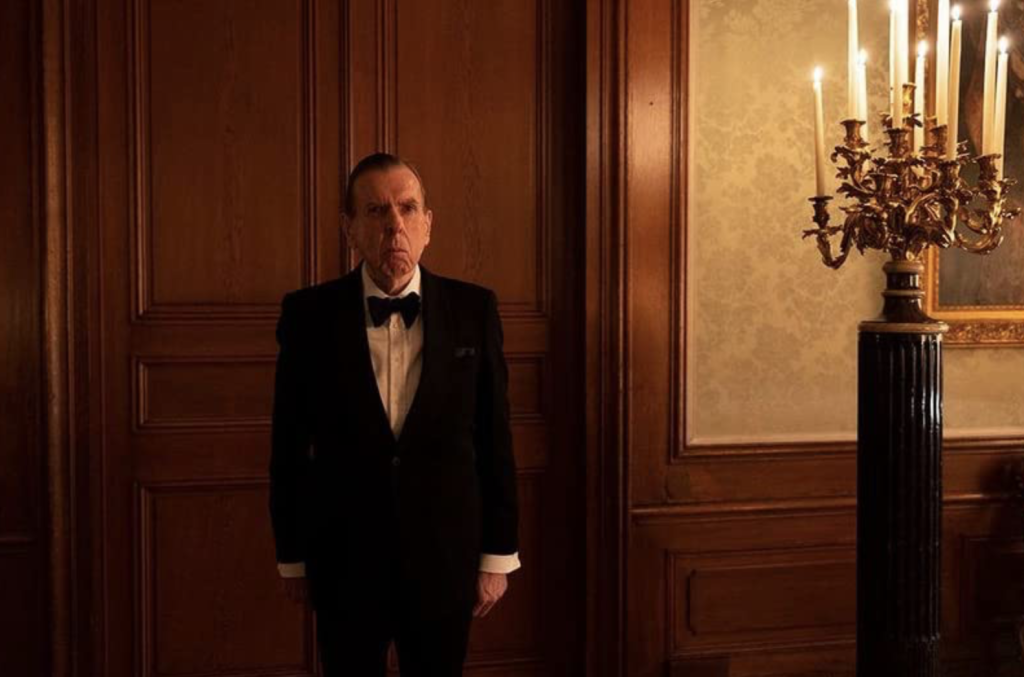
Q: What was it like working with Kristen Stewart?
WY: She was delightful to work with. She’s very calm, and then good fun, good cook – she cooked for us a few times. It’s really pleasant to be around her, very encouraging and very professional. She came on time, she left on time. She was lovely, very helpful. We have become friends, she is a good person.
Q: Maybe you will work with her on another film or something in the future.
WY: Yeah, it would be nice.
Q: Let’s move on to “Belfast”. “Belfast” was shot in black and white, an aesthetic look that, I imagine as a makeup and hair artist, is more different from a color film.
So what was the difference for you, what kind of preparation was required for you?
WY: Actually, I didn’t know that we were shooting in black and white until probably a week before. I think Haris [Zambarloukos, DP] mentioned it. But I think we [as a] crew, we booked together for many projects, so we are like a family. I thought Haris was joking to me that we were shooting in black and white and I didn’t take it seriously. Then I think the week before the shoot it was quite real: okay, we are actually shooting in black and white.
I didn’t do very much preparation to [shoot] in black and white. But the things that I wanted to do, in black and white you don’t see the color. So the only things you see are reflections and depths and textures, and those things are quite important. For example, for [the boy’s?] hair, I wanted to make it as tangled, more knotty, so it’s not fluffy, freshly-washed hair, so I think he’s got life in the hair. I think it gave more depth to the [image].
I think makeup, as well, actually it’s really easy to shoot in black and white because you don’t see very much into mistakes in that. Their skin looks better as well. But I think because there is no color, sometimes people could look ill, so it was quite important to do the shading of the skin so you can see the textures and shadows. If you [use] the wrong color, it goes very flat, so something is used to introduce more texture. I wanted everybody to be sweated and then shiny so it shines, it’s not matte.
Again, there are so many documented photographs available from that time because it was a very specific time in history. So there are a bunch of pictures for children, the adults, and people in the parks. I wanted everybody to look like somebody from those pictures and render the similarity.
Most of the pictures that I had for the research are black and white. So when I saw the rushes, the dailies, I compared our work and the pictures that we had to see what we could improve.
For the first week. we were just kind of testing how things were. But I think most of the time I just left everyone if they looked good, if they looked real. I told everyone, please don’t “check”. Just do a fast look on set, and just fix the hair and fix the makeup. I wanted everybody to look as realistic as possible.
I told my team that if there is any mistake, or anything that we really have to do or we have to check, we do. But other than that, just let them be. So we were keeping the realism, looking like they were real people; that was very important. Otherwise it can be quite distracting when you watch the film.
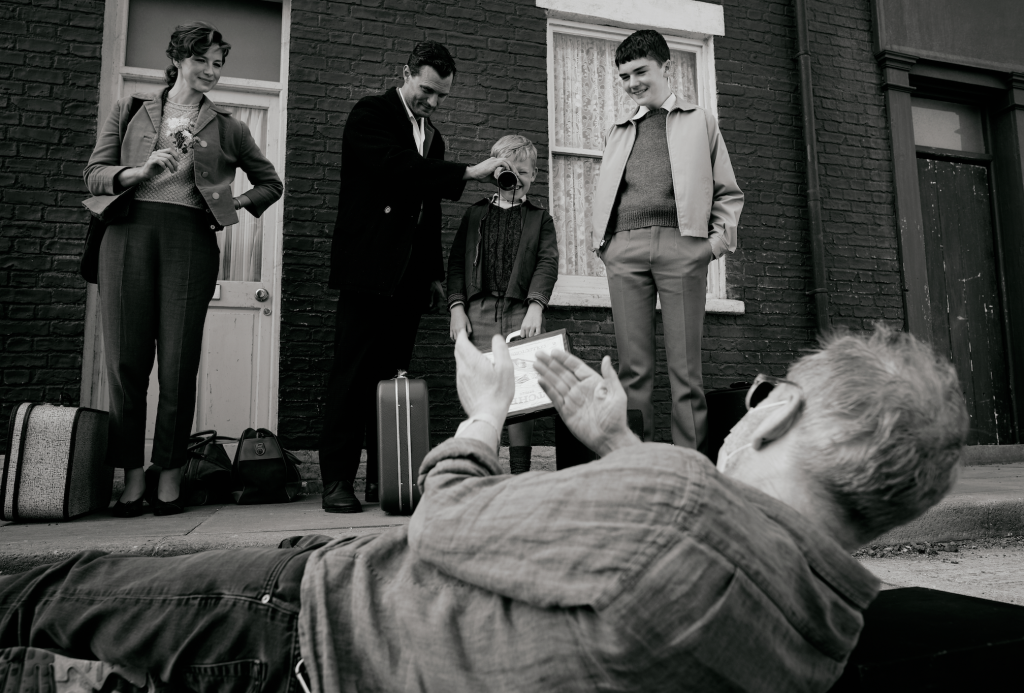
Q: I heard that this film was shot in five to six weeks, a short span. All the actors are growing their hair while they are shooting, so when you prepare the wig, what kind of preparation do you have to do? What kind of things do you have to apply when using a wig?
WY: I think it’s good that people don’t realize which ones are the wigs. I think that’s the good news that wigs are not noticeable. I think I learned from the best in my young days. I think the trick of how to make the wigs doesn’t look like a wig.
You have to study how the hair grows. It’s the direction of the hair that’s very important, how the hair moves. Then you have to copy the person’s hair follicles, the direction, and how things are manipulated. Lots of times you see the wig look like a wig – it’s like all the direction is the same and then goes in a different direction, which is not natural. So when I dress the wig, I intend to dress it like someone’s hair.
I often study my children’s hair growth, the crown of the head. Their hair grows in cycles, and sometimes it grows clockwise and sometimes counter-clockwise. If you have that, then I think that’s the beauty of the wig. So I think it’s to make it look like a human being’s hair. To look human, you just have to copy the real human’s hair.
I don’t treat the wig like “a wig” that you put on. I always treat the wig like someone’s hair. When I dress it, I compare it with the pictures of how it’s been done. The hair always grows back into place.
Also your question of how to keep the actors’ hair growth, you don’t have to worry about wigs because wig hair doesn’t grow, obviously. But I think for the children, like Jude [Hill] – and I think Jude’s hair grows quite quickly so I had to cut it properly every ten days, maybe every week. Just cut a tiny, tiny bit so that you don’t really notice the growth. Lots of times you can do the textures and then you can “cheat” it. So that’s okay.
Jamie [Dornan]’s hair was very short because he shaved his hair during lockdown. So when I met Jamie before the shoot, his hair was super-super-short. But luckily his hair is very curly, so I used his curls to give the volume so it looked like his hair was longer. For Jamie’s hair I only cut the sides. Then on the last week of the shoot, his hair grew into quite a good length, so like the first part of the shoot, I was just cheating to make his hair look longer, but it was super-short. But when you see the film, I don’t think you will notice it.
Q: It’s an interesting film about Kenneth Branagh’s personal life. How did you collaborate with him. You’ve known Kenneth for some time, but does this experience differ from your past works? This film is very personal to him, so how did he approach you about making this film?
WY: I worked with Ken many times, so I know that he has a very good eye for visuals. And also it’s a personal project, so first I asked him if there were any photographs that he could give me to work from, like a picture of his family. So he gave me some pictures of the family, and then when he was little.
From there, I found pictures of someone who was close to the persons in the film. For example, Ken’s mum; she had a quite similar hairstyle from the Bridget Bardot [look] in the late Fifties. So I collated [conflated?] the picture of her. Then Ken’s dad was quite neat, and swept back – short back and sides. So I looked into Marlon Brando from the Forties.
So I kind of gave material like “What about this?” and then I think it might go as well because I think from Buddy’s eyes the parents were like superstars. So I thought it would be nice to emphasize, and also make them look beautiful. And then I think Ken’s parents, in fact, are very good-looking people.
You can see the similarity of those characters, so that was quite easy. And then the rest of the characters I researched for people. Lots of people had come from there, and I researched pictures of Belfast from 1969.
Q: Thank you so much for your interview, I really appreciate it.
WY: That’s okay. Very nice meeting you.

